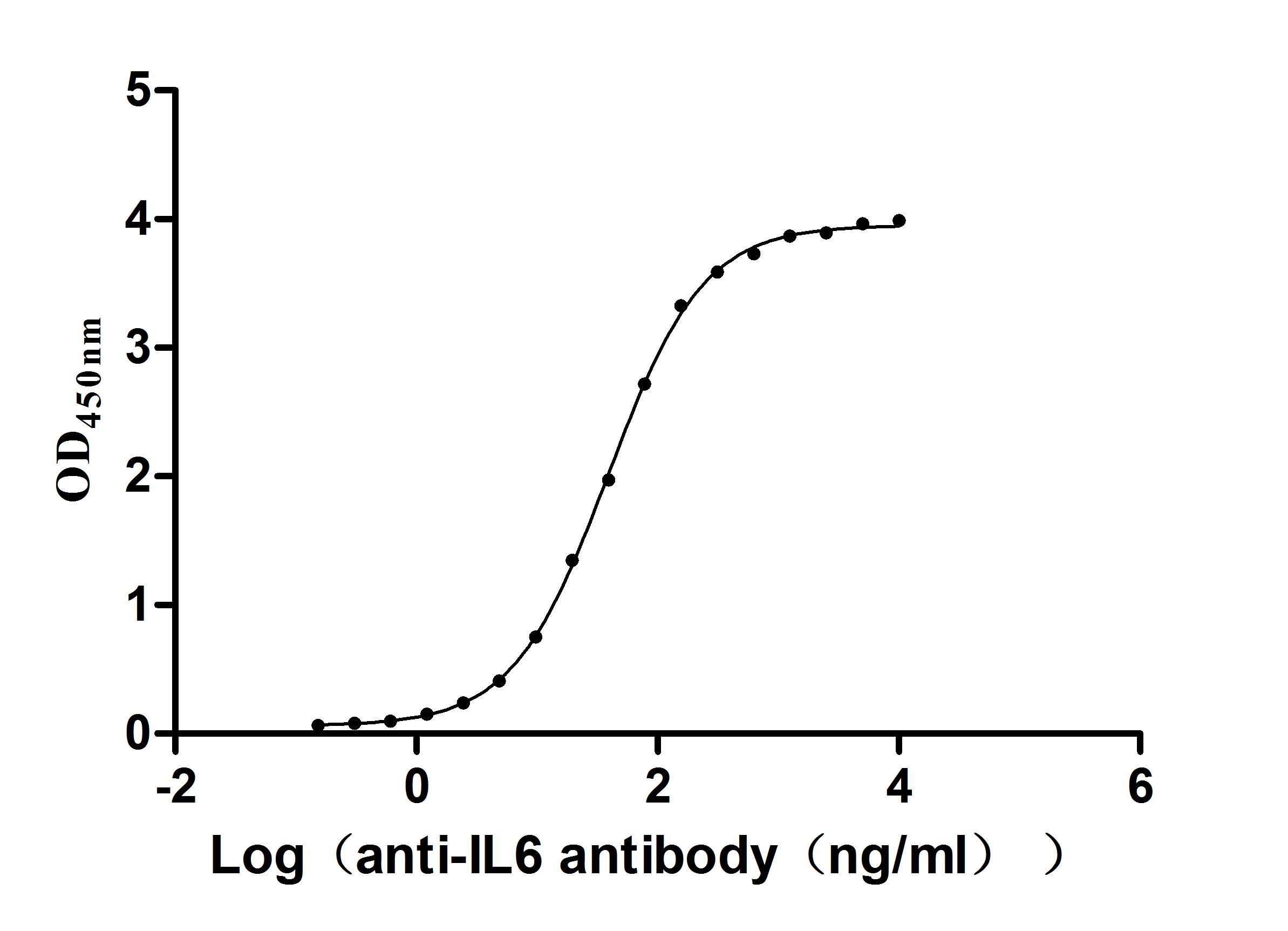Recombinant Arabidopsis thaliana LOB domain-containing protein 6 (LBD6)
-
中文名称:拟南芥LBD6重组蛋白
-
货号:CSB-YP517324DOA
-
规格:
-
来源:Yeast
-
其他:
-
中文名称:拟南芥LBD6重组蛋白
-
货号:CSB-EP517324DOA
-
规格:
-
来源:E.coli
-
其他:
-
中文名称:拟南芥LBD6重组蛋白
-
货号:CSB-EP517324DOA-B
-
规格:
-
来源:E.coli
-
共轭:Avi-tag Biotinylated
E. coli biotin ligase (BirA) is highly specific in covalently attaching biotin to the 15 amino acid AviTag peptide. This recombinant protein was biotinylated in vivo by AviTag-BirA technology, which method is BriA catalyzes amide linkage between the biotin and the specific lysine of the AviTag.
-
其他:
-
中文名称:拟南芥LBD6重组蛋白
-
货号:CSB-BP517324DOA
-
规格:
-
来源:Baculovirus
-
其他:
-
中文名称:拟南芥LBD6重组蛋白
-
货号:CSB-MP517324DOA
-
规格:
-
来源:Mammalian cell
-
其他:
产品详情
-
纯度:>85% (SDS-PAGE)
-
基因名:LBD6
-
Uniprot No.:
-
别名:AS2; LBD6; At1g65620; F5I14.15Protein ASYMMETRIC LEAVES 2; LOB domain-containing protein 6
-
种属:Arabidopsis thaliana (Mouse-ear cress)
-
蛋白长度:full length protein
-
表达区域:1-199
-
氨基酸序列MASSSTNSPC AACKFLRRKC QPECVFAPYF PPDQPQKFAN VHKVFGASNV TKLLNELHPS QREDAVNSLA YEADMRLRDP VYGCVGVISL LQHQLRQLQI DLSCAKSELS KYQSLGILAA THQSLGINLL AGAADGTATA VRDHYHHHQF FPREQMFGGL DVPAGNNYDG GILAIGQITQ FQQPRAAAGD DGRRTVDPS
-
蛋白标签:Tag type will be determined during the manufacturing process.
The tag type will be determined during production process. If you have specified tag type, please tell us and we will develop the specified tag preferentially. -
产品提供形式:Lyophilized powder
Note: We will preferentially ship the format that we have in stock, however, if you have any special requirement for the format, please remark your requirement when placing the order, we will prepare according to your demand. -
复溶:We recommend that this vial be briefly centrifuged prior to opening to bring the contents to the bottom. Please reconstitute protein in deionized sterile water to a concentration of 0.1-1.0 mg/mL.We recommend to add 5-50% of glycerol (final concentration) and aliquot for long-term storage at -20℃/-80℃. Our default final concentration of glycerol is 50%. Customers could use it as reference.
-
储存条件:Store at -20°C/-80°C upon receipt, aliquoting is necessary for mutiple use. Avoid repeated freeze-thaw cycles.
-
保质期:The shelf life is related to many factors, storage state, buffer ingredients, storage temperature and the stability of the protein itself.
Generally, the shelf life of liquid form is 6 months at -20°C/-80°C. The shelf life of lyophilized form is 12 months at -20°C/-80°C. -
货期:Delivery time may differ from different purchasing way or location, please kindly consult your local distributors for specific delivery time.Note: All of our proteins are default shipped with normal blue ice packs, if you request to ship with dry ice, please communicate with us in advance and extra fees will be charged.
-
注意事项:Repeated freezing and thawing is not recommended. Store working aliquots at 4°C for up to one week.
-
Datasheet :Please contact us to get it.
靶点详情
-
功能:Negative regulator of cell proliferation in the adaxial side of leaves. Regulates the formation of a symmetric lamina and the establishment of venation. Positively regulates LATERAL ORGAN BOUNDARIES (LOB) within the shoot apex, and the class III HD-ZIP genes REV, PHB, and PHV. Interacts directly with ASYMMETRIC LEAVES 1 (AS1) to repress the knox homeobox genes KNAT1, KNAT2, and KNAT6 and the abaxial determinants ARF3, KAN2 and YAB5. May act in parallel with the RDR6-SGS3-AGO7 pathway, an endogenous RNA silencing pathway, to regulate the leaf morphogenesis. Required for the binding of AS1 to the KNOX genes. Involved in leaf polarity establishment by functioning cooperatively with RH10 or RID2 to repress abaxial genes ARF3, ARF4, KAN1, KAN2, YAB1 and YAB5, and the knox homeobox genes KNAT1, KNAT2, KNAT6, and STM to promote adaxial development in leaf primordia at shoot apical meristems at high temperatures.
-
基因功能参考文献:
- AS2 role in the DNA methylation and leaf polarity.AS2 binds specifically the sequence containing CpGs in exon 1 of ARF3. PMID: 29415182
- ASYMMETRIC LEAVES2 expression is critical for leaf axial patterning. PMID: 24006428
- These results suggest that AS2 bodies function to properly distribute AS2 to daughter cells during cell division in leaf primordia; and this process is controlled at least partially by signals encoded by the AS2 sequence itself. PMID: 22351044
- AS2 and the miRNA319-targeted TCP transcription factors form protein complexes, which associate with promoter regions and downregulate BP and KNAT2 expression. PMID: 22380849
- AS2 might be involved in the determination of abaxial polarity in cockscomb plants. PMID: 22143880
- AS2 genes are important for repressing class I KNOTTED1-like homeobox (KNOX) genes and specifying leaf adaxial identity in leaf development PMID: 16006579
- Results suggest that histone deacetylases HDT1/HD2A and HDT2/HD2B, and ASYMMETRIC LEAVES (AS) 1 and 2 act independently to control levels and/or patterns of miR165/166 distribution and the development of adaxial-abaxial leaf polarity. PMID: 17293570
- AS2 represses cell proliferation in the adaxial domain in the presence of asymmetric leaves 1, and adaxial expression of AS2 at an appropriate level is critical for the development of a symmetrical, expanded lamina. PMID: 17559509
显示更多
收起更多
-
亚细胞定位:Nucleus.
-
蛋白家族:LOB domain-containing protein family
-
组织特异性:Expressed in young shoots, roots, stems, leaves, flowers and adaxial domains of cotyledonary and leaves primordia.
-
数据库链接:
KEGG: ath:AT1G65620
STRING: 3702.AT1G65620.1
UniGene: At.27203
Most popular with customers
-
Recombinant Human Poliovirus receptor (PVR) (I340M), partial (Active)
Express system: Mammalian cell
Species: Homo sapiens (Human)
-
Recombinant Human C-C chemokine receptor type 8 (CCR8)-VLPs (Active)
Express system: Mammalian cell
Species: Homo sapiens (Human)
-
Recombinant Human Cadherin-17 (CDH17), partial (Active)
Express system: Mammalian cell
Species: Homo sapiens (Human)
-
Recombinant Human Myosin regulatory light chain 12A (MYL12A) (Active)
Express system: E.coli
Species: Homo sapiens (Human)
-
-
Recombinant Human Cadherin-6(CDH6),partial (Active)
Express system: Mammalian cell
Species: Homo sapiens (Human)


-AC1.jpg)















